Speaker Information: 4th Kenji Ishihara Colloquium Series on Earthquake Engineering
Impact of Climate Change on Community Earthquake Resilience
Speakers and Abstracts
Daniel Armanios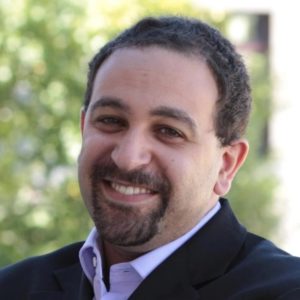
BT Professor, University of Oxford
The Role of Physical Infrastructure on Inequality
Abstract:When we think of physical infrastructure, we often focus on the assets themselves, such as bridges, pipelines, transmission systems, and roads, amongst others. However, we often think less about the role of the people and organizations that influence and guide the design and management of such systems. At the same time, when we think of structural inequality, we think about long-standing institutional norms and practices that advantage one group over another. However, we do think less about how such practices can become physically embodied in infrastructure systems that allow such inequality to scale and to persist. In other words, perhaps inequality is not just “structural” metaphorically (via institutions) but also literally (via physical infrastructure). My talk will bring together these views. First, we will demonstrate that access to infrastructure does not evenly accrue to everyone, unlike how prevailing models incorporate infrastructure. Second, we will demonstrate the deleterious ramifications of this uneven access, namely that certain disadvantaged groups may be systematically shut out from the U.S. high-tech economy. Third, we show one possible mechanism for how this may occur – infrastructure as “institutional relics”. Infrastructure is “institutional” in that they are sited and designed based upon the authoritative standards of the time and/or location. They are relics in that given their long design life, these systems often persist, even after their standards are later updated and changed. Finally, I will discuss some possible strategies for addressing these challenges and their implications and framing with regards to earthquake resilience.
Bio: Dr. Daniel Armanios is the BT Professor of Major Programme Management at the University of Oxford’s Saïd Business School as well as a Distinguished Visiting Professor of Leadership at Tsinghua University’s Schwarzman College. He was formerly an Associate Professor at Carnegie Mellon University in the Department of Engineering and Public Policy. Daniel’s current research interests lie at the intersection of institutions, engineering systems, and public policy & entrepreneurship. More specifically, he focuses on the social processes that influence how physical and scientific infrastructure is built and subsequently used to achieve entrepreneurship, innovation, and sustainable development outcomes.
Sahar Derakhshan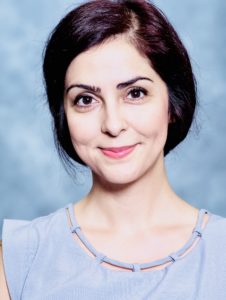
Postdoctoral Fellow, Institute of the Environment and Sustainability (IoES)
University of California, Los Angeles
Intersection between climate change and earthquake resilience: Community resilience
Abstract: One common ground for the impacts of climate change and earthquakes is the community itself and its adaptive capacity, existing vulnerabilities and inherent resilience. This translates into the disproportionate impact of hazard events across communities, which we have seen in previous disasters and will observe more if we do not include this important aspect in our resilience and mitigation planning. What are the current trends in measuring social vulnerability and community resilience, how can these merge with earthquake engineering designs, and where are the research/practice gaps in this union? We will explore the answer to these questions through some examples from previous events and mitigation plans.
Bio: Dr. Sahar Derakhshan is a Postdoctoral Fellow at the Institute of the Environment and Sustainability (IoES), UCLA and an affiliated researcher at the Hazards and Vulnerability Research Institute (HVRI), University of South Carolina. She is a civil engineer (B.Sc.), has received her doctorate in geography from University of South Carolina, and holds a Master of Public Policy (MPP) from University of California, Berkeley. Her work experience extends from industry to research institutions including projects for the World Bank for risk assessment and National Academy of Sciences (Gulf Research Program). Her research interest is to study and assess the effect of geospatial inequalities, social and economic status, and institutions in taking action to foster change in mitigation planning and disaster recovery, for a safer and more resilient community.
Susan Cutter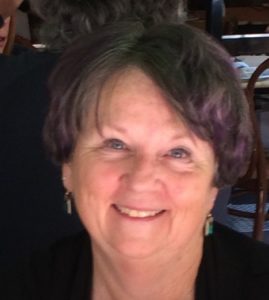
Carolina Distinguished Professor, University of South Carolina
Director, Hazards Vulnerability and Resilience Institute (HVRI)
Disaster Inequality and Equitable Risk Reduction
Abstract: The presentation examines the evidentiary basis for equitable risk reduction in an era of increasing risk inequality. Changes in the nature of hazards and their management have created a new normal of extreme events, increasingly complex and cascading hazards and fostered persistent disaster inequalities. Recognizing such inequalities is not the same as showing proof of them and integrating the empirically based evidence into practice and policy. Examples from South Carolina’s recent disasters experience illustrates how to translate and integrate research into disaster mitigation and resilience policy and practice at local, state, and federal levels.
Bio: Dr. Susan Cutter is a Carolina Distinguished Professor of Geography at the University of South Carolina and director of the Hazards Vulnerability and Resilience Institute (HVRI). She has authored or edited 15 books, 150+ plus peer-reviewed articles and book chapters and mentored more than 60 masters and doctoral candidates. Her research focusses on disaster vulnerability and resilience science with specific reference to methods, models, and metrics. Her scientific contributions include the hazards of place model of vulnerability, the disaster resilience of place (DROP) model, as well as tools for assessing spatial and temporal variability in vulnerability (Social Vulnerability Index or SoVI®) and resilience (Baseline Resilience Indicators for Communities [BRIC] Index). Her policy-relevant work focuses on the evidentiary basis for hazard mitigation and disaster recovery policy and practice at local, state, national, and international levels. In particular, she continues to lead investigations of the disproportionate spatial and temporal impacts of disasters on vulnerable populations and the places where they live. Dr. Cutter is an elected fellow of American Association for the Advancement of Science (AAAS). She received an honorary doctorate from the Norwegian University of Science and Technology (2015) and elected as a foreign member of the Royal Norwegian Society of Sciences and Letters. She was also the recipient of her discipline’s three highest awards: American Association of Geographers (AAG) Lifetime Achievement, Presidential Achievement, and the Wilbanks Award for Transformational Research.
Negar Elhami-Khorasani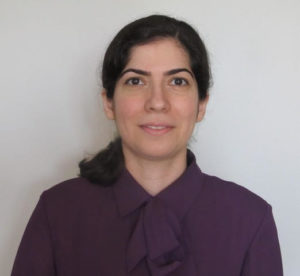
Associate Professor, University at Buffalo
Planning for fire following earthquake considering interconnected infrastructure systems
Abstract: Fire following earthquake is a cascading multi-hazard event in seismic-prone regions and can lead to significant social and economic losses. Past events, such as the 1994 Northridge earthquake with 110 earthquake-related fire ignitions, confirm the increased likelihood of post-earthquake fires. The impacts of cascading events become more acute in modern communities with interdependent infrastructure systems, where disruption in one system could affect the operability of other infrastructure systems. This presentation discusses the impacts of fire following earthquake on dense urban communities. The proposed framework incorporates the effects of earthquake damage on electric, water, transportation, and building inventory. A decision-making algorithm is implemented to guide the response of the fire department to locations of ignition considering available resources in terms of fire engines and water pressure, delayed response time, and fire spread within and between buildings. The proposed framework is applied to a case study and the results are demonstrated in terms of the efficiency of suppression action by the fire department and direct economic losses. The developed framework can benefit public safety and community resilience to cascading multi-hazard events.
Bio: Negar Elhami-Khorasani is an Associate Professor in the Department of Civil, Structural and Environmental Engineering at the University at Buffalo. Her primary areas of research are performance-based design and resilience assessment of structures and communities under extreme hazards including structure fires, wildfires, earthquakes, and cascading multi-hazard events, such as post-earthquake fires. The outcomes of her research enhance safety by developing codes and guidelines, and minimize losses by optimizing mitigation, preparedness, and response strategies. Elhami-Khorasani is the co-Chair of the ASCE/SEI Fire Protection Committee and led the Fire Following Earthquake Task Group in charge of publishing a book on procedures for analysis of buildings for post-earthquake fires. She serves as an associate editor for Fire Technology by Springer Nature. She is also a member of the fib, IAFSS, and the SEAoNY Resilience committees. She was the recipient of the 2020 AISC Early Career Faculty award and the Fire Protection Research Foundation Medal. Her research has been funded by the National Science Foundation, Department of Transportation, United States Geological Survey, National Fire Protection Association, and ASCE Structural Engineering Institute.
alex grant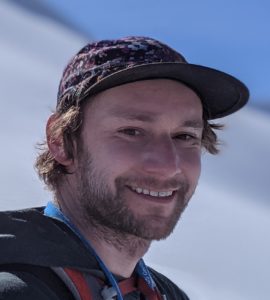
Research Civil Engineer, United States Geological Survey Earthquake Science Center
The Impacts of Sea Level Rise on San Francisco Bay-area Liquefaction Hazard
Abstract: The San Francisco Bay area (SFBA) in California is a densely populated, low-lying coastal region built on alluvial sediment and fill situated between the highly active San Andreas and Hayward fault systems. The region has repeated demonstrated the damaging effects of liquefaction in past earthquakes, and the prediction of future liquefaction potential throughout the Bay Area remains an important topic of research. Motivated by requests from emergency managers in response to the USGS ‘HayWired’ earthquake scenario (a M7.0 earthquake on the Hayward fault), we explored how liquefaction likelihood and impacts are expected to change over the coming decades with climate change driven sea-level-rise. This talk will discuss the results of our study on how future ‘HayWired’ earthquakes may develop greater coseismic (liquefaction) impacts due to sea-level-rise.
Bio: alex grant is a Research Civil Engineer at the U.S. Geological Survey Earthquake Science Center with an interest in regional-scale seismic and coseismic hazards, with emphases on subduction zones and the effects of climate change. alex got his Ph.D. from the University of Washington and B.S.E. from Tufts University in Civil and Environmental Engineering studying earthquake-triggered landslide hazard and risk.
Hussam Mahmoud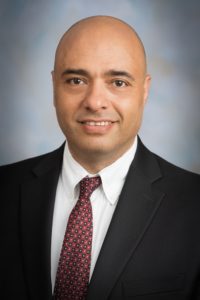
George T. Abell Professor, Colorado State University
Resilience of Healthcare Systems Under the Compounding Impact of Pandemics and Climate-Intensified Wildfires
Abstract: The COVID-19 pandemic has graphically underscored the limitations and weaknesses of the ability of healthcare systems to effectively deal with a novel virus outbreak. Natural disasters in the U.S. further compound the effect of pandemics with conflicting mitigation strategies. Considering the compound impact of natural disasters and pandemics is particularly important given the predicted increase in intensity and frequency of climate-driven natural disasters and the increasing frequency of novel infectious diseases. To date, frameworks for quantifying the collective impact of pandemics and climate-intensified wildfires on hospitals are nonexistent. Moreover, analytical methods for capturing the dynamic spatiotemporal variability in capacity and demand of healthcare systems posed by different stressors are lacking. In this presentation, the combined effect of wildfire, inisfied by climate change, and pandemics on a network of hospitals will be investigated. Wildfire spread model will be used to evalaute the vulernability of the built-environment at the community level while accounting for how future climates might intensify structural vulnerabilities. Structural damgage from the wildfire scenarios will be combined with varying courses of the spread of COVID-19 to evaluate the effectiveness of different strategies for managing patient demand. The results show that losing access to medical care is a function of the relative occurrence time between the two events and is substantial in some cases and is likely to worsen in the future due to climate events. By applying viable mitigation strategies and optimizing resource allocation, patient outcomes could be substantially improved under the combined hazards.
Bio: Hussam Mahmoud is the George T. Abell Professor in Infrastructure in the Department of Civil and Environmental Engineering at Colorado State University (CSU). He is Director of the Structural Laboratory at CSU and the academic advisor for the AISC Student Steel Bridge Competition. He obtained his BSc and MSc in civil engineering from the University of Minnesota and his PhD from the University of Illinois at Urbana-Champaign (UIUC). Prior to pursuing his Ph.D., he was the manager of the NEES Earthquake Laboratory at the UIUC and a research scientist at Lehigh University. Dr. Mahmoud has authored over 250 publications and has given more than 140 presentations including 100 invited talks at national and international conferences and workshops. He is the current chair of the ASCE Committee on Multi-Hazard Mitigation and has chaired and served on other ASCE and AASHTO technical committees. He is the recipient of various awards, including the American Institute of Steel Construction early faculty career award, the American Iron and Steel Institute Robert J. Dexter Memorial Lecture Award, and the Air Force summer faculty fellowship award. He has been invited to various symposia by the U.S. National Academies, the Royal Academy of Engineering, and the Royal Institute of International Affairs and has recently been selected by the NASEM among the New Voices Cohort. His research has received media coverage through citations and interviews in numerous venues, including Nature Climate Change, The U.S. National Academy of Engineering, Smithsonian Magazine, and CNN.
Therese McAllister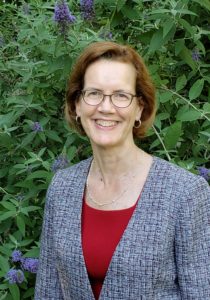
Community Resilience Group Leader and Program Manager, National Institute of Standards and Technology
Enabling Community Resilience through Design Practices
Abstract: Communities are embracing resilience planning to prepare for future hazard events and ongoing stressors. Resilience addresses the ability of a community to recover its services and functions within a specified timeframe, averting potential disruptions, and to make improvements for future events and conditions. Built infrastructure plays a key role in community resilience.
Resilience builds upon well-established concepts that include urban planning, hazard characterization, reliability, life safety, risk management, mitigation, and emergency response. It provides a framework to integrate these and other concepts, such as functional recovery.
An overview of community resilience and its relevance to the built environment will be provided as context for considering resilience in the design process. Resilient buildings and infrastructure minimize damage and losses and help identify damage that is repairable within a specified time to support their role in recovering social and economic functions. While this is an active area of research and development, principles and available guidance for designing resilient buildings and infrastructure will be presented. An update on current progress and challenges will be presented, as well as the contributions that engineers can make to help communities become more resilient, with a focus on performance-based design and other tools.
Bio: Dr. Therese McAllister is the Community Resilience Group Leader and Program Manager in the Engineering Laboratory (EL) at the National Institute of Standards and Technology (NIST). She is also the NIST Technical Liaison for the NIST-funded Center for Risk-Based Community Resilience Planning, led by Colorado State University. She conducts research on community resilience, with a focus on the integrated performance of physical infrastructure and social and economic systems. She has expertise in structural reliability, risk assessment, and failure analysis of buildings and infrastructure systems.
She was recognized with the 2021 ASCE Walter P Moore, Jr award and 2018 ASCE Ernest E Howard Award for her research on structural codes and standards and on resilience. Dr. McAllister is a Distinguished Member of ASCE, a Structural Engineering Institute Fellow, and serves on the ASCE/SEI 7 standard committee, Infrastructure Resilience Division, the Technical Council on Life-Cycle Performance, Safety, Reliability and Risk of Structural Systems, and the SEI Board Level Resilience Committee.
Kit Miyamoto and Amir Gilani
Global CEO, Miyamoto International, Inc.
Manager, Miyamoto International, Inc.
Impact of climate change on the performance of the built environment
Abstract: Natural disasters have caused significant damage to the built environment in recent years. The 2005 Hurricane Katrina, the 2011 Tōhoku earthquake and tsunami, the 2021 Western state wildfires in the US, and the 2022 Appalachia floods resulted in loss of life, damage to infrastructure and significant financial losses. The adverse impacts of climate change execrates the natural hazard vulnerability to infrastructure—sea level rise could inundate roads; larger and more frequent hurricanes could cause damage and increase the risk of flooding; higher rainfalls increase the probability of landslides; and higher temperatures results in additional fire damage. Many of the climate change effects also have adverse impacts on the seismic vulnerability of infrastructure: i) increased temperatures could result in closure of expansion joints for roadway and railroad bridges and induce additional demand into the columns; ii) increased flooding could undermine foundation of structures and bridges; cause scour and undermine their seismic performance; iii) increased fire danger could result in underground electric conducts that can be vulnerable to seismic loading; and iii) and increase rainfall could cause builders in developing counties to use thicker and heavier roofs causing building damage in the earthquakes.
In this presentation, the authors will focus on two recent events; collapse of the 2021 Surfside Condominium collapse in Miami, Fl; and ii) performance of buildings in recent earthquakes worldwide. Structural design mitigation to manage the risk posed to buildings will be discussed.
Steve Moddemeyer
Principal, CollinsWoerman
Command and Control is for Emergencies. Shared Values is for Adaptation and Recovery
Abstract: Before the floods of November, 2021, the Whatcom County Tribes, farmers, small cities, and Whatcom County River and Flood engineers had years of collaboration in the Nooksack River. The Floodplain Integrated Planning (FLIP) brought together conflicting interests to work together to reduce flood damage to farms and cities while also creating and supporting restoration of lost endangered fish habitat. FLIP successfully managed millions of dollars of well-designed solutions with multiple benefits by deploying shared values, good listening, advanced monitoring, and joint project proposals. On November 12, 2022 five atmospheric rivers hit the region in quick succession pouring trillions of gallons of rain into the Nooksack watershed causing widespread flooding in Whatcom and British Columbia. Damage in the billions of dollars took place as the river flooded wide areas of Whatcom as well as an ancient river course heading north to Canada’s Frazier River system. Response to the floods required quick action and multiple rescues. What was once a collaborative partnership between different interests shifted to command and control during and immediately after the flood. Trust built before the disaster was deeply stressed as major real-time decisions with potential long-term impacts were rushed toward implementation under extraordinary conditions. Yet once the floods retreated, two things remained: damage and the command and control mindset. Well-meaning state and federal emergency management agencies who excel in first response stepped into the community with a mix of opaque processes, acronym-heavy procedures, non-intuitive programs and regulatory expectations. At what point in a disaster is it appropriate to transition from command and control to collaboration? How can federal and state entities with disaster response priorities leverage local trust and rely on shared values collaborations to enhance the adaptive capacity of locally diverse communities as they recover from extreme events?
Bio: Steve Moddemeyer is a principal of CollinsWoerman with 31 years’ experience leading governments, land owners, and project teams towards increased sustainability and resilience. He creates tools, policies and programs that empower communities to implement resilience principles into planning for land use and urban infrastructure. He works on climate change adaptation, sustainability strategies for large urban redevelopments, and advanced sustainability strategies for land owners, cities, counties, and utilities. Steve is currently serving as Chair of the National Academies of Sciences, Engineering, and Medicine’s Committee on Hazard Mitigation and Resilience Applied Research Topics. He is an Advisor to the John Hopkins Center for Health Security on the Post-Pandemic Recovery Project. He is a past member of the National Academies of Sciences Resilient America Roundtable (two terms). He serves as an advisor to the University of Washington Masters in Infrastructure Management and Planning, Member of the International Union for the Conservation of Nature: Resilience Theme Group, and founding member of The Little Think Tank, a group of academic and policy experts that focus on resilient recovery actions for American communities. Trained as a landscape architect, Steve creates multi-benefit implementation strategies that bring together natural and human systems by applying socio-ecological principles to system design, urban design, policy design, and industrial symbiosis development.
Adam Rose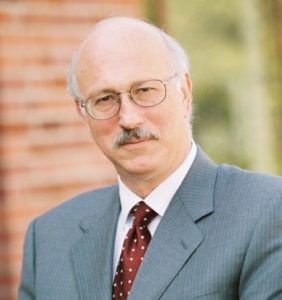
Professor, University of Southern California
What Businesses Can Do to Plan for Recovery from Earthquakes and Climate Change Impacts Simultaneously
Abstract: Concern over climate change is increasing as evidence mounts about its destructive forces. This includes the effects of short-term climate variability (e.g., droughts, wildfires, more intense hurricanes) in addition to longer-term threats (e.g., temperature increases, sea-level rise). Many are quick to point to a supposed dichotomy between climate-disasters and earthquakes. This is the case when one considers the distinct causes and some of the impacts, but is much less so when it comes to recovery. If a factory with damage to its roof cannot produce at its pre-disaster level or if it no longer has access to one of its critical production inputs because one of its suppliers is damaged, the cause of the damage is irrelevant. Factories, and any other businesses and institutions, are essentially the same boat in terms of repair and reconstruction, as well as coping with the critical input disruption in the meantime.
Resilience is often defined broadly to include all actions to reduce risk, ranging from mitigation to emergency planning to emergency management to recovery. However, the Latin root of the term is to “rebound”. This presentation will focus on that aspect and present important concepts related to static and dynamic aspects of resilience, as well as inherent and adaptive ones. It will present 11 tactics the businesses can use to cope with supply disruptions in ways that repair and reconstruction can be accelerated so as to reduce business interruption (BI) losses. While property damage is often the emphasis of risk reduction, and the primary target of pre-event mitigation, BI just begins when the disaster strikes and continues until the entity has recovered. In fact, BI, typically measured in terms of gross domestic product or employment, can often exceed the level of property damage (e.g., the 2001 World Trade Center Attack Hurricane Katrina). Resilience in this context is all about business continuity and reducing BI.
The presentation will also present results of recent research to estimate the cost-effectiveness of 11 resilience tactics. The estimation is based on surveys of victims of Hurricanes Sandy Harvey. It will also present a decision-support tool known as the Business Resilience Calculator (BRC), which small and medium-sized businesses can use to identify and implement the most cost-effective resilience tactics.
Bio: Adam Rose is a Research Professor in the University of Southern California Sol Price School of Public Policy, and Senior Research Fellow at USC’s Center for Risk and Economic Analysis of Threats and Emergencies (CREATE). He has spearheaded the development of CREATE’s comprehensive economic consequence analysis framework and has done pioneering research on resilience at the level of the individual business/household, market/industry and regional/national economy. He is the author of several books and more than 200 peer-reviewed publications. He is the recipient of several honors, including the Distinguished Research Award from the International Society for Integrated Risk Management.
Luis “Vance” Taylor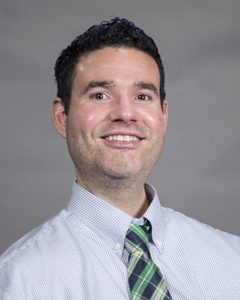
Chief, Office of Access and Functional Needs, California Governor’s Office of Emergency Services
The Whole Community: We Succeed or Fail Together
Abstract: Integrating every phase of the emergency management process to address the needs of individuals with access and functional needs before, during, and after disasters furthers preparedness, builds resilience, and empowers the whole community.
Bio: Luis “Vance” Taylor is the Chief of the Office of Access and Functional Needs at the California Governor’s Office of Emergency Services. Vance is responsible for ensuring the needs of individuals with disabilities and persons with access or functional needs are identified before, during and after disasters and integrated into the State’s emergency management systems.
Born and raised in the San Francisco Bay Area, Vance was diagnosed with muscular dystrophy as a child and uses a power wheelchair. He has worked in Washington, D.C. as an advisor for two different members of Congress, directed security policy at a national water association and been a principal at a top-ranked homeland security and emergency management consulting firm. Vance is a nationally recognized public speaker and advocate for individuals with disabilities.
Vance has a Master’s degree in homeland security from the University of Connecticut and an undergraduate degree from Brigham Young University in communications. He is married to his sweetheart, Casey, and they have two wonderful daughters.
Vance and his family live in Rancho Cordova, CA.
Benjamin Zaitchik
Professor, Johns Hopkins University
Anticipating and addressing complex climate hazards
Abstract: Both climate extremes and earthquakes can present severe shocks to human and natural systems, bringing the potential for substantial harm during the event and continued burden during the recovery period. This presentation will introduce three themes from the study of climate risks that may be relevant to thinking about earthquake resilience in the context of global change. First, I will review recent updates to the Intergovernmental Panel on Climate Change framework for evaluating risk as a function of vulnerability, exposure, impact, and response. Next, I will consider case studies in propagating risks, in which an initial climate extreme has spatially or temporally distal impacts via its impacts on markets and other networks. Finally, I will address concepts of compound and cascading hazards, which may be relevant to earthquake resilience both as an analogy and as multi-hazard processes in which climate and earthquake risks interact to affect outcomes.
Bio: Dr. Benjamin Zaitchik is a Professor in the Department of Earth and Planetary Sciences at Johns Hopkins University. He is an Earth scientist whose work includes study of fundamental atmospheric and hydrological processes as well as application of this knowledge to problems of water resources, agriculture, and human health. In this context, Dr. Zaitchik leads multiple projects focused on the propagation of climate stresses through complex coupled natural-human systems. Prior to joining Johns Hopkins University, Dr. Zaitchik was a Research Associate at NASA and a AAAS Fellow at the U.S. Department of State. He is currently the President of the GeoHealth Section of the American Geophysical Union, Chair of the World Meteorological Organization Research Board Task Team on COVID-19 and climate, meteorological, and environmental factors, and a Commissioner on the City of Baltimore Sustainability Commission.
Speaker Information: 4th Kenji Ishihara Colloquium Series on Earthquake Engineering
Artificial Intelligence Applications in Earthquake Engineering
Speakers and Abstracts
Karianne J. Bergen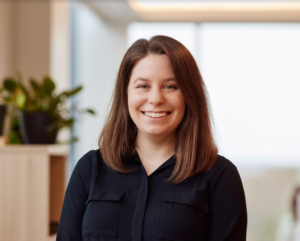
Assistant Professor, Brown University
Explainable AI for Seismology: An interpretable convolutional neural network architecture for earthquake detection
Abstract: Geophysicists are increasingly adopting machine learning (ML) techniques to analyze seismic signals. Deep neural networks have emerged as particularly powerful tools for classifying waveforms and identifying seismic phases. These models can learn complex patterns and decision functions with high predictive accuracy. But the complexity and large number of parameters also make these “black box” models difficult to inspect or interpret. The emerging field of explainable artificial intelligence (XAI) is developing tools and techniques to enable ML solutions that can be understood by human analysts. This work presents an interpretable one-dimensional convolutional neural network (CNN) model for earthquake phase detection. In this approach, a simple CNN-based detector (Ross et al.,2018) is modified to learn representative waveforms for classification. These prototype waveforms are used directly by the model to generate the predictions and can be used to explain the model outputs. The new prediction model achieves similar prediction accuracy and has a similar architecture to the original CNN model, but with the added benefit of greater interpretability.
Bio: Dr. Karianne J. Bergen is an Assistant Professor of Data Science and Earth, Environmental and Planetary Sciences at Brown University and Assistant Professor of Computer Science. Her research interests are in scientific machine learning and trustworthy and explainable AI. Her past work has focused on machine learning and data mining techniques for pattern recognition and discovery in large, complex sensor datasets, including her dissertation research on large-scale earthquake detection in regional seismic networks. Dr. Bergen earned a Ph.D. and M.Sc. in Computational and Mathematical Engineering from Stanford University, and a B.Sc. in Applied Mathematics from Brown University. She completed her postdoctoral training at Harvard University where she was a Data Science Initiative Postdoctoral Fellow in Computer Science and Earth and Planetary Sciences. Prior to starting her graduate work, Dr. Bergen worked as a staff data scientist in the Biological and Chemical Defense Systems Group at MIT-Lincoln Laboratory.
Scott J. Brandenberg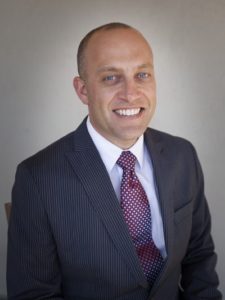
Professor, University of California, Los Angeles
Relational Databases to Facilitate Ground Motion and Liquefaction Data Science
Abstract: Preparing, validating, and storing large datasets is often the most complicated aspect of any data science project. This presentation will focus on relational databases that have been assembled to store earthquake ground motion data in California and liquefaction case history data from around the world. The organizational structure of the databases will be briefly discussed, followed by a focus on graphical user interfaces, application programming interfaces, and queryable copies of the database in DesignSafe that allow users to interact with the data. A machine learning algorithm developed to automatically identify soil layers from cone penetration test data will be presented as an example application of relational databases in data science.
Bio: Scott J. Brandenberg is a Professor in the Civil and Environmental Engineering Department at the University of California, Los Angeles. His research expertise lies primarily in geotechnical earthquake engineering, with focus on soil-structure interaction, multi-hazard reliability of levee systems, the response of deep foundations to liquefaction-induced lateral spreading, seismic earth pressures acting on earth retention systems, and cyberinfrastructure projects, including development of community databases for liquefaction assessment. He has authored over 100 technical papers, and received the 2022 Thomas A. Middlebrooks Award, 2015 Walter L. Huber Award, 2013 Shamsher Prakash Research Award, and 2010 Arthur Casagrande Professional Development Award. He earned his PhD and MS in 2005 and 2002, respectively, from the University of California, Davis, and his BS in 2000 from Cal Poly, San Luis Obispo. He served as the Associate Dean for Diversity and Inclusion in the UCLA Samueli School of Engineering from 2017 through 2020.
Youssef Hashash
Professor, University of Illinois at Urbana-Champaign
Deep Learning-Based Site Amplification Models for Central and Eastern North America
with Okan Ilhan
Abstract: This presentation will describe development of deep learning/Artificial neural network (ANN)-based response spectrum (RS) and Fourier amplitude spectrum (FAS) site amplification models for Central and Eastern North America (CENA) using a large-scale simulation database. The amplification database used in model development was produced through large-scale one-dimensional site response analyses for a total of over 3 million analyses. The linear, nonlinear, and total RS and FAS models adopt identical inputs with the corresponding conventional function and produce significantly reduced bias relative to their conventional counter parts. The analogous ANN structure can model all kinds of simulated amplification data (e.g. linear or nonlinear) and is capable of utilizing any site or motion-dependent inputs thought to affect amplification behavior including VS30 and site natural period (Tnat), thus alleviating the need for pre-defined model functional forms for different types of simulation dataset. The deep learning models more accurately represent site-specific amplification compared to conventional relationships.
Bio: Professor Youssef Hashash holds a B.S. (1987), an M.S. (1988) and a Ph.D. (1992) in civil engineering from the Massachusetts Institute of Technology. He began his career with the PB/MK TEAM in Dallas on the Superconducting Super Collider Project. In 1994 he joined Parsons Brinckerhoff in San Francisco and worked on a number of underground construction projects in the U.S. and Canada including the Boston Central Artery/Tunnel project.
Professor Hashash joined the faculty of the Department of Civil and Environmental Engineering at the University of Illinois at Urbana-Champaign in 1998. He teaches courses in Geotechnical Engineering, Numerical Modeling in Geomechanics, Geotechnical Earthquake Engineering, Tunneling in Soil and Rock, and Excavation and Support Systems. His research focus includes deep excavations and tunneling in urban areas, earthquake engineering, continuum and discrete element modeling and soil-structure interaction as well as resiliency and sustainability of the built infrastructure. He also works on geotechnical engineering applications of deep learning, artificial intelligence, visualization, augmented reality, imaging and drone technologies. He has published numerous journal articles and is co-inventor on four patents. His research group developed the software program DEEPSOIL that is used worldwide for evaluation of soil response to earthquake shaking.
Professor Hashash is a Fellow of the American Society of Civil Engineers (ASCE), a past president of the Geo-institute of ASCE and has received a number of teaching, university and professional awards including the Presidential Early Career Award for Scientists and Engineers and the ASCE 2014 Peck medal. He was elected to the National Academy of Engineering in 2022.
Qingkai Kong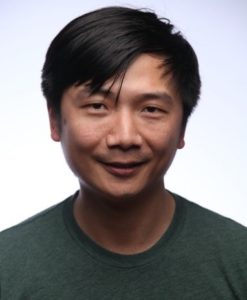
Research Scientist, Lawrence Livermore National Laboratory
Crowdsourcing Earthquake Information Enabled by AI
Abstract: In this talk, our efforts in the area of crowdsourcing earthquake information will be presented. The first part of the talk will be MyShake, a smartphone seismic network to collect earthquake motions and issue earthquake early warning from daily smartphones. A series of machine learning algorithms are utilized to solve some of the challenging problems from distinguish human activities to estimating the earthquake parameters. Second part of the talk will discuss how we built an automated pipeline relying on a transfer learning-based model to extract the damaged buildings images after earthquakes from social media platforms such as Twitter in near real-time. Moreover, with the data science tools available these days, useful public response information from Twitter and Reddit can also be extracted to enhance our post-earthquake information collection.
Bio: Qingkai Kong is currently a research scientist at Lawrence Livermore National Laboratory, where his research is mainly focused on how to combine machine learning with prior physics information in various seismological problems. Before he joined the lab, he was an Assistant Researcher at Berkeley Seismology Lab working between Earth Science and Data Science, where he built the MyShake smartphone seismic network. He also worked as a visiting researcher in the visiting faculty program at Google, Mountain View, to help build the Android Earthquake Alerting System.
Krishna Kumar
Assistant Professor, University of Texas at Austin
Can we trust AI models in Earthquake Engineering?
Abstract: Machine Learning is a ‘black box’ technique – a large number of parameters and complexity of learned representations can prevent researchers from describing what information is relevant to a model’s prediction. This talk will open the black box to explain the logic and reasoning behind ML predictions in earthquake engineering applications. Explainable models include post-hoc techniques, glass-box models, and deriving physics laws from observations. Post-hoc techniques such as LIME and SHAP values assign importance metrics to different parameters in the dataset, thus explaining what features led to the classification or regression. We will present a random forest algorithm developed for classifying liquefiable sites based on CPT data and topological features from the NZ liquefaction database. Although the random forest model has a very high predictive ability of 85%, we reveal that the model learned incorrect physics using explanations (X-AI). We will also explore other post-hoc techniques such as GRADCAM to identify regions of interest in performing a full-waveform inversion. We develop exploratory techniques using Total Variation to look into the black box neural networks. Although post hoc explanations offer some degree of interpretability, merely investigating the cases where the model works may not reveal serious gotchas. Unlike explainable models, Glass box models provide a fully interoperable approach to ML, where one can explicitly see how the model works and follow every step along the way from input to the final output. We create Physics-Informed explainable trees (PiX-trees) for liquefaction classification by developing individual and correlated relationships between factors affecting liquefaction and potential failure. The ultimate goal of explainability is to derive new unknown knowledge or physics laws. We will explore techniques such as knowledge distillation to derive fully explainable models that offer insight into physics. Finally, we will derive known and unknown physics laws that describe the runout dynamics of an earthquake-induced landslide using graph networks.
Bio: Krishna Kumar is an Assistant Professor in Civil, Architecture, and Environmental Engineering at the University of Texas at Austin. Krishna completed his Ph.D. from the University of Cambridge in 2015 on multi-scale multiphase modeling of granular flows and was supervised by Professor Kenichi Soga. Krishna’s research interest spans high-performance computing, numerical modeling, and explainable AI of natural hazards. He has developed massively parallel micro-/macro-scale numerical methods: Graph Network Simulator, Material Point Method, Lattice Boltzmann – Discrete Element coupling, and Lattice Element method. Krishna was awarded C. S. Desai Award for the best paper on constitutive modeling of geologic materials by the Indian Geotechnical Society.
Youzuo Lin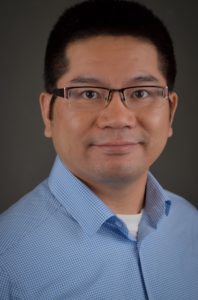
Staff Scientist, Los Alamos National Laboratory
Spatio-Temporal Graph Convolutional Networks for Earthquake Source Characterization
Abstract: Accurate earthquake location and magnitude estimation play critical roles in seismology. Recent deep learning frameworks have produced encouraging results on various seismological tasks (e.g., earthquake detection, phase picking, seismic classification, and earthquake early warning). Most existing machine learning earthquake location methods utilize waveform information from a single station. However, multiple stations contain more complete information for earthquake source characterization. Inspired by recent successes in applying graph neural networks in graph-structured data, we develop a Spatio-Temporal Graph Convolutional Neural Network (STGCN) for estimating earthquake locations and magnitudes. Our graph neural network leverages geographical and waveform information from multiple stations to construct graphs automatically and dynamically by an adaptive feature integration process. Given input waveforms collected from multiple stations, the neural network constructs different graphs and fuses spatial-temporal consistency effectively from various stations based on graphs’ edges. Using a recent graph neural network and a fully convolutional neural network as baselines, we apply STGCN to earthquakes cataloged by Southern California Seismic Network from 2000 to 2019 and induced earthquakes collected in Oklahoma from 2014 to 2015. STGCN yields more accurate earthquake locations than those obtained by the baseline models and performs comparably in terms of depth and magnitude prediction, though the ability to predict depth and magnitude remains weak for all tested models. Our work demonstrates the potential of using graph neural networks and multiple stations for better automatic estimation of earthquake epicenters.
Bio: Youzuo Lin is a staff scientist and the Team Leader for the Sensor and Signatures Team at Los Alamos National Laboratory (LANL). His research interests include physics-informed machine learning, time series analysis, seismic inversion, and computational methods for solving ill-posed inverse problems. Particularly, he has worked on a wide spectrum of applications including Earthquake detection and monitoring, CO2 storage, hydrology inverse modeling, and ultrasound tomography for breast cancer detection. He has been a co-inventor on a couple of U.S. patents about ultrasound imaging techniques. He has published more than 70+ articles in top journals and conferences. Dr. Lin is an Associate Editor of Machine Learning: Science and Technology and co-edited the 2021 Special Issue in IEEE Transactions on Neural Networks and Learning Systems and the 2019 Special Issue in Journal of Interpretation: Machine Learning in Seismic Data Analysis. Dr. Lin holds a Ph.D. degree in Applied and Computational Mathematics from Arizona State University.
Jorge Macedo
Assistant Professor, Georgia Institute of Technology
Machine learning-based procedures for estimating seismically-induced slope displacements
Abstract: The assessment of the seismic performance of slope systems often relies on estimating the amount of seismically-induced slope displacements (D) using semiempirical models. These models take as inputs the slope properties and ground motion intensity measures (IMs) to provide D estimates that are used in engineering design. However, most of the available models have been developed for regions affected by shallow crustal seismicity. Comparatively, the available models for subduction tectonic settings are scarce. Moreover, most existing models have been developed using traditional statistical methods that do not take full advantage of modern data-driven approaches. This presentation will discuss the development of new machine learning (ML) based D models applicable to shallow crustal and subduction earthquake zones (considering both interface and intraslab mechanisms). The performance of the developed ML-based models is compared in terms of predictive performance, model trends, and computational cost for training. Lastly, the use of the developed models in performance-based earthquake engineering will also be briefly discussed.
Bio: Dr. Jorge Macedo, Ph.D., P.E., is an Assistant Professor in the School of Civil and Environmental Engineering at the Georgia Institute of Technology, where he joined the faculty in 2018. Dr. Macedo practiced as a geotechnical tailings engineer for six years (2008-2013), working on major mining and earthquake engineering projects in Peru, Argentina, Chile, and Brazil from conception to detailed engineering design, and he holds P.E licenses in California and Peru. Dr. Macedo’s main research areas are geotechnical earthquake engineering, mining geotechnics, and data-driven risk engineering applied to multi-hazards. He received the prestigious 2022 United States National Science Foundation CAREER award for his work at the convergence of performance-based engineering, tailings geotechnics, and data science. Dr. Macedo is also the founder and chair of the TAILENG (TAilings and IndustriaL waste ENGineering) center, which works on improving the resilience of infrastructure in the mining and power industries.
Hiroyuki Miura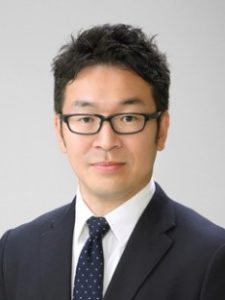
Associate Professor, Hiroshima University
Application of AI Technology for Estimating Site Amplification Factor from Microtremor H/V Spectral Ratio
coauthored with Da Pan
Abstract: Recent Artificial Intelligence (AI) technologies including deep neural network-based learning have been expanded to various fields not only for image and sound recognitions but also for earthquake and structural engineering issues. This study introduces an application of deep neural network for automatically estimating site amplification factor of seismic wave (S-wave) in frequency domain from microtremor data. The proposed model was developed from observed earthquake and microtremor data at the seismic stations in Chugoku district, western Japan. The model can automatically produce the site amplification factor from microtremor horizontal-to-vertical (H/V) spectral ratio without external investigation such as geophysical exploration and long-term seismic observation. The accuracies and applicability of the method are also discussed in the presentation.
Bio:
Education:
Doctor of Engineering, Department of Built Environment, Tokyo Institute of Technology, Japan (2004)
Master of Engineering, Department of Built Environment, Tokyo Institute of Technology, Japan (2001)
Bachelor of Engineering, Faculty of Engineering, Tokyo Institute of Technology, Japan (1999)
Experience:
2004.4-2007.9, Postdoctoral Research Fellow, Tokyo Institute of Technology
2007.10-2012.10, Assistant Professor, Tokyo Institute of Technology
2012.10-Present, Associate Professor, Hiroshima University
Research Interests:
Evaluation of ground motion characteristics based on strong motion and mictotremor data
Earthquake damage assessment of buildings
Spatial data analysis for urban disaster mitigation planning
Awards:
Young Researcher Award by Japan Association for Earthquake Engineering (JAEE), 2008
Excellent Presentation Award in JAEE Annual Meeting, 2009
Excellent Presentation Award in JAEE Annual Meeting, 2011
Outstanding Paper Award by Institute of Social Safety Science (ISSS), 2016.
Outstanding Paper Award by Institute of Social Safety Science (ISSS), 2018.
Professional Affiliations:
Architectural Institute of Japan (AIJ), Japan Association for Earthquake Engineering (JAEE), The Seismological Society of Japan (SSJ), Institute of Social Safety Science (ISSS), Earthquake Engineering Research Institute (EERI), Seismological Society of America (SSA)
Principle Publications selected
Peer-reviewed articles (Related to Artificial Intelligence and Earthquake Engineering):
- Pan, D., Miura, H., Kanno, T., Shigefuji, Abiru, T.: Deep Neural Network-based Estimation of Site Amplification Factor from Microtremor H/V Spectral Ratio, Bulletin of the Seismological Society of America, 2022, https://doi.org/10.1785/0120210300 .
- Tumurbaatar, Z., Miura, H., Tsamba, T.: Development of Building Inventory Data in Ulaanbaatar, Mongolia for Seismic Loss Estimation, ISPRS International Journal of Geo-Information, 11(1), 26, 2021, https://doi.org/10.3390/ijgi11010026 .
- Adriano, B., Yokoya, N., Xia, J., Miura, H., Liu, W., Matsuoka, M. and Koshimura, S.: Learning from Multimodal and Multitemporal Earth Observation Data for Building Damage Mapping, ISPRS Journal of Photogrammetry and Remote Sensing, Vol.175, pp.132-143, 2021, https://doi.org/10.1016/j.isprsjprs.2021.02.016 .
- Miura, H., Aridome, T. and Matsuoka, M.: Deep Learning-based Identification of Collapsed, Non-collapsed and Blue Tarp-Covered Buildings from Post-disaster Aerial Images, Remote Sensing, Vol.20, No. 12, 1924, 2020, https://doi.org/10.3390/rs12121924 .
- Miura, H., Okamura, T., Matsuoka, M., Leal, M., Garcia, H. and Pulido, N.: Empirical Models for Surface and Body Wave Amplifications of Response Spectra in the Bogotá Basin, Colombia, Bulletin of the Seismological Society of America, Vol.109, No.3, pp.987-1004, 2019, https://doi.org/10.1785/0120180154 .
- Miura, H., Fujita, H., Than, K. S. S. and Hibino, Y.: Estimation of Site Response during the 2016 Chauk, Myanmar Earthquake Based on Microtremor-derived S-wave Velocity Structures, Soil Dynamics and Earthquake Engineering, Vol.126, 105781, 2019, https://doi.org/10.1016/j.soildyn.2019.105781 .
- Miura, H., Midorikawa, S. and Matsuoka, M.: Building Damage Assessment Using High-Resolution Satellite SAR Images of the 2010 Haiti Earthquake, Earthquake Spectra, Vol.32, No.1, pp.591-610, 2016.
- Midorikawa, S., Yamanaka, H., Chimoto, K., Riddell, R., Miura, H. and Saguchi, K.: Evaluation of Site Effects on Strong Ground Motion Records in Concepcion during the 2010 Maule, Chile Earthquake, Bulletin of the Seismological Society of America, Vol.104, No.5, pp.2503-2511, 2014.
- Miura, H., Midorikawa, S. and Kerle, N.: Detection of Building Damage Areas of the 2006 Central Java, Indonesia Earthquake through Digital Analysis of Optical Satellite Images, Earthquake Spectra, Vol.29, No.2, pp.453-473, 2013.
- Stewart, J. P., Midorikawa, S., Graves, R. W., Khodaverdi, K., Kishida, T., Miura, H., Bozorgnia, Y. and Campbell, K. W.: Implication of Mw 9.0 Tohoku-oki Japan Earthquake for Ground Motion Scaling with Source, Path, and Site Parameters, Earthquake Spectra, Vol.29, No.S1, pp.S1-S21, 2013.
- Midorikawa, S., Miura, H. and Atsumi, T.: Strong Motion Records of the 2011 Tohoku Earthquake and Its Attenuation Characteristics, Journal of Disaster Research, Vol.7, No.6, pp.695-700, 2012.
- Miura, H., Midorikawa, S., Fujimoto, K., Pacheco, B. M., and Yamanaka, H.: Earthquake Damage Estimation in Metro Manila, Philippines Based on Seismic Performance of Buildings Evaluated by Local Experts’ Judgments, Soil Dynamics and Earthquake Engineering, Vo.28, No.10-11, pp.764-777, 2008.
- Miura, H. and Midorikawa, S.: Updating GIS Building Inventory Data Using High-Resolution Satellite Images for Earthquake Damage Assessment: Application to Metro Manila, Philippines, Earthquake Spectra, Vol.22, No.1, pp.151-168, 2006.
Jamie E. Padgett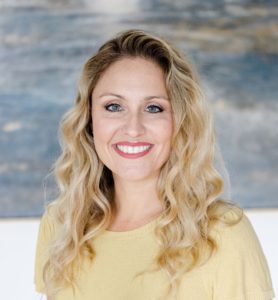
Stanley C. Moore Endowed Professor and Department Chair, Rice University
Facilitating seismic risk and resilience analysis in heterogenous and multi-scale systems
coauthored with Raul Rincon
Abstract: The exposure of the built environment to aging, deterioration effects and shifts in demands combined with the occurrence of extreme events, such as earthquakes, poses unique challenges to modelers, designers, and managers of structures and infrastructure systems, and the communities that depend upon their effective functioning. The fields of earthquake risk and resilience engineering aim to support such endeavors and necessarily benefit from the integration different methods and perspectives. Artificial intelligence (AI) has been one of the cross-disciplinary fields that has permeated the earthquake engineering (EE) community in the most recent decade. Specific to AI, the machine learning (ML) field introduces capabilities for modeling, analyzing, visualizing and discovering different aspects of the built environment and its performance when subjected to natural hazards that otherwise would be challenging to achieve. In this talk we discuss how evolving developments in ML have transformed the EE community, and offer illustrative examples of research performed, and currently ongoing, in our research lab. As an example, we present the use of supervised ML for uncertainty propagation and fragility estimation in settings where the number and variety of parameters, the randomness in these parameters, and the consideration of time-varying characteristics would lead to infeasible (or very expensive) schemes if using traditional approaches. Beyond efficiency, supervised and unsupervised methods (and combinations of them) are presented herein as mechanisms for discovering the structure and seismic demand parameters that most contribute to the seismic performance and post-event functionality of structural components, structural systems, and larger infrastructure systems. Hence, we demonstrate how advances in ML and its application facilitate not only transformative research but also pave a path to support practical design, management and community resilience planning.
Bio: Jamie E. Padgett is the Stanley C. Moore Endowed Professor and Department Chair of Civil and Environmental Engineering at Rice University in Houston, TX. Padgett is a structural engineer with a passion for engineering for social good. Her research is focused on multi-hazard risk and resilience modeling of structures and infrastructure systems, and understanding their impacts on communities. Her work develops new methods to quantify and improve the performance of infrastructure exposed to natural hazards such as earthquakes, hurricanes and flooding. Padgett’s research has applications to a range of systems, including bridges, tank farms, energy and industrial facilities, and intermodal transportation systems. She has published over 250 articles in journals or archived conference proceedings in the general area of structural fragility, life-cycle assessment, and infrastructure resilience. Dr. Padgett has received several prestigious awards and recognitions including the Executive Leadership in Academic Technology, Engineering and Science (ELATES) Fellowship (2021-2022); Engineering Mechanics Institute (EMI) Objective Resilience Distinguished Lecturer (2019); the American Society of Civil Engineering (ASCE) Walter L. Huber Civil Engineering Research Prize (2017); and the National Science Foundation (NSF) Faculty Early Career Development (CAREER) Award (2011). She is a Fellow of ASCE’s Structural Engineering Institute (SEI) and the founding Chair of its technical committee on Multiple Hazard Mitigation. Among other advisory and professional service roles, Padgett serves on Editorial Boards for such journals as the ASCE Journal of Structural Engineering, Natural Hazards Review, and Earthquake Engineering and Structural Dynamics. Padgett serves in leadership roles within several large national research efforts including the NIST Center of Excellence for Risk-based Resilience Planning, the NSF Natural Hazards Engineering Research Infrastructure (NHERI) Cyberinfrastructure “DesignSafe-CI”, and the Severe Storm Prediction Education and Evacuation from Disasters (SSPEED) Center. She is the Faculty Director of the inaugural Gulf Scholars Program at Rice University funded by NASEM’s Gulf Research Program, and a Fellow of Rice’s Kinder Institute for Urban Research.
Adrian Rodriguez-Marek
Professor, Virginia Tech
Use of Machine Learning Tools to Evaluate Site Terms in Ground Motion Models
coauthored with Mohsen Zaker Esteghamati, Balakumar Anbazhagan, and Albert R. Kottke
Abstract: This study develops a data-driven framework to improve the prediction of site amplification in ground motion models using horizontal-to-vertical spectral ratios (HVSR) proxies. Three machine learning algorithms (multiple regression, random forest, and support vector machine) were implemented in an automated data-driven workflow that included feature selection (filter-based, wrapper-based, and embedded methods), hyperparameter tuning, and cross-validation modules. The site-to-site variability of resultant data-driven models was then compared to a Fourier Amplitude Spectrum baseline ground motion model. In addition, sensitivity analysis on framework choices was carried out. The results show that data-driven models with HVSR proxies derived from strong motion data provide lower site-to-site variability than conventional GMM. The best performing data-driven model (i.e., support vector machines) showed an average of 24.1% (and up to 50.8 %) lower site-to-site variability than the baseline ground motion model, where the difference was more significant at lower frequencies. The use of noise-based HVSR measures also showed promise, but the improvements over traditional proxy-based approaches were not as marked.
Bio: Click here to learn about Dr. Rodriguez-Marek.
Rodrigo Silva-Lopez and Jack Baker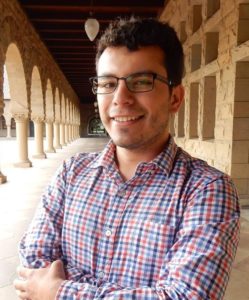
Ph.D. Candidate, Stanford University
Professor, Stanford University
Deep learning-based retrofitting and seismic risk assessment of road networks
Abstract: Seismic risk assessment of road systems involves computationally expensive traffic simulations to evaluate the system’s performance. To accelerate this process, we developed a neural network surrogate model that allows rapid and accurate estimation of changes in traffic performance metrics due to bridge damage. In addition to the neural network, a modified version of the Local Interpretable Model-Agnostic Explanation (LIME) is proposed as a retrofitting strategy that minimizes earthquakes’ impact on the system. The modified version (LIME-TI) uses Traffic Impacts and rates of occurrence to aggregate the importance of individual damage realizations during the computation of variable importance. Using the San Francisco Bay Area Road network as a testbed, we verified that the neural network accurately predicts the system’s performance while taking five orders of magnitude less time to compute traffic metrics. Moreover, the proposed LIME-TI retrofitting strategy is superior to others (such as traffic volume or vulnerability) in identifying bridges whose retrofit effectively improves network performance.
Bio: Rodrigo Silva-Lopez is a Ph.D. Candidate at Stanford University. His research focuses on improving the seismic resilience of road networks by developing and implementing machine learning and optimization techniques. In addition, his work has aimed at exploring the community impacts of road network disruption to inform decision-makers about broader implications of potential mitigation actions.
Click here to learn about Dr. Jack Baker.
Aidin Tamhidi and Yousef Bozorgnia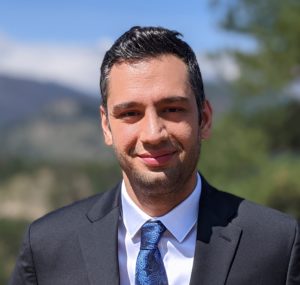
Ph.D. Candidate, University of California, Los Angeles
Professor, University of California, Los Angeles
Artificial Intelligence and Earthquake Engineering; Application for Seismic Performance of Soft-Story Buildings
Abstract: This study outlines a methodology for seismic performance quantification and rapid generation of structural computer models for an inventory of soft, weak, and open-front (SWOF) story buildings using Artificial Intelligence (AI) Neural Networks. Los Angeles city serves as a testing ground for our framework, as it contains around 13,500 SWOF structures. After a significant earthquake, the conventional damage assessment of such buildings is undertaken visually, which might take months. Consequently, the capacity to conduct quick post-earthquake structural health assessments is an essential skill. To achieve this, it is necessary to characterize computer structural model for target buildings using inventories of archetype models established based on structural properties. We offer a trained Convolutional Neural Network (CNN) model capable of classifying the first-story wall layout and number of stories for the target buildings. The building identification evaluation of the proposed CNN model shows acceptable accuracies in comparison with the human detection error. Furthermore, the CNN’s gradient-weighted class activation maps indicate the capacity to recognize wall opening patterns corresponding to the first-story wall layouts. The resultant estimates of the proposed CNN model can be combined with additional data from other sources, such as satellite photos or OpenStreet map’s input data, to determine the closest archetypal structural model, enabling quick assessment of post-earthquake structural damage. Pre-event developed computer models of the identified buildings are assigned to each building and excited by generated site-specific time histories to evaluate seismic performance of a large class of buildings in a real-time manner after an earthquake.
Bio: Aidin Tamhidi is a Ph.D. candidate in Structural and Earthquake Engineering at University of California, Los Angeles. He received his B.Sc. in Civil and Environmental Engineering and M.Sc. in Structural Engineering both from Sharif University of Technology (Iran). His research is about Next-Generation Earthquake Field Data Measurements and their Use to Assess Earthquake Performance of Soft-Story Buildings. He is conducting his research under the supervision of Professor Yousef Bozorgnia.
Click here to learn about Dr. Yousef Bozorgnia.
4th Kenji Ishihara Colloquium Series on Earthquake Engineering
Impact of Climate Change on Community Earthquake Resilience
September 2nd, 2022
Virtually on Zoom
Human-induced climate change is becoming a global climate crisis. Natural hazards are increasing in frequency and intensity. New challenges are arising to earthquake professionals. Issues such as sea level rise, heavy rainfalls, and wildfires are making communities more seismically vulnerable. What are these new challenges in terms of community earthquake mitigation and resilience? How is the occurrence of earthquakes on top of natural hazards exacerbated by human-induced climate change affecting community earthquake resilience? What and how may earthquake professionals contribute to solve this global climate crisis? A global problem demands a global solution; what are the next steps in this direction?
These and other questions will be discussed and addressed to provide some information and guidance about community earthquake resilience, the roles of earthquake professionals, and what other professionals are doing addressing other natural hazards directly affected by the global climate crisis.
Click the image on the right to view event flyer.
PROGRAM
All times are in Pacific Daylight Time (PDT).
Opening Remarks
| EERI | 8:00am | 8:05am |
| UCSD | 8:05am | 8:10am |
Session 1: Keynote Speakers – Moderator: Jorge Meneses
| Prof. Susan Cutter | Disaster Inequality and Equitable Risk Reduction | 8:15am | 8:45am |
| Dr. Therese McAllister | Enabling Community Resilience through Design Practices | 8:45am | 9:15am |
| Prof. Benjamin Zaitchik | Anticipating and addressing complex climate hazards | 9:15am | 9:45am |
| Discussion Panel | 9:45am | 10:15am | |
| Break | 10:15am | 10:30am |
Session 2 – Moderators: Zahraa Saiyed and Tasneem Sadeque
| Prof. Daniel Armanios | The Role of Physical Infrastructure on Inequality | 10:30am | 11:00am |
| Dr. Sahar Derakhshan | Intersection between climate change and earthquake resilience: Community resilience | 11:00am | 11:30am |
| Vance Taylor | The Whole Community: We Succeed or Fail Together | 11:30am | 12:00pm |
| Discussion Panel | 12:00pm | 12:30pm | |
| Lunch Break | 12:30pm | 1:30pm |
Session 3 – Moderator: Alvaro Celestino
| Prof. Hussam Mahmoud | Resilience of Healthcare Systems under the Compounding Impact of Pandemics and Climate-Intensified Wildfires | 1:30pm | 2:00pm |
| Prof. Adam Rose | What Businesses Can Do to Plan for Recovery from Earthquakes and Climate Change Impacts Simultaneously | 2:00pm | 2:30pm |
| Prof. Negar Elhami-Khorasani | Planning for fire following earthquake considering interconnected infrastructure systems | 2:30pm | 3:00pm |
| Discussion Panel | 3:00pm | 3:30pm | |
| Break | 3:30pm | 3:45pm |
Session 4 – Moderator: Hamidreza Sarmadi
| Dr. Alex Grant | The Impacts of Sea Level Rise on San Francisco Bay-area Liquefaction Hazard | 3:45pm | 4:15pm |
| Steve Moddemeyer | Command and Control is for Emergencies. Shared Values is for Adaptation and Recovery | 4:15pm | 4:45pm |
| Dr. Kit Miyamoto & Dr. Amir Gilani | Impact of climate change on the performance of the built environment | 4:45pm | 5:15pm |
| Discussion Panel | 5:15pm | 5:15pm | |
| Closing Remarks | 5:45pm | 5:50pm |
Click here to learn about our colloquium speakers and read presentation abstracts.
Click here to view replays of the colloquium sessions.
PLATFORM
Zoom link will be provided to registered attendees prior to the event.
REGISTRATION
Click here to register for the colloquium.
ORGANIZING COMMITTEE
Chair: Dr. Jorge Meneses
Alvaro Celestino
Janna Bonfiglio
Tasneem Sadeque
Kristen Chang
Hamid Sarmadi
Prof. Gilberto Mosqueda
Ricardo Bustamante
Kayla Erler
For sponsorship opportunities, please contact Dr. Jorge Meneses at jmenesesl@gmail.com.
4th Kenji Ishihara Colloquium Series on Earthquake Engineering
Artificial Intelligence Applications in Earthquake Engineering
September 1st, 2022
In-Person: University of California, San Diego
Virtually: Zoom
Artificial intelligence is rapidly developing, enhancing the role of data science in many disciplines including earthquake engineering. Applications of artificial intelligence are currently present in many aspects of our daily lives (e.g. automated driving cars, finding directions between two locations, facial recognition, e-commerce and marketing, healthcare, gaming, hiring processes, etc.). When big data or data analytics is involved, like in many aspects of earthquake engineering, artificial intelligence emerges as the efficient response.
This symposium will present and discuss current applications of artificial intelligence in different aspects of earthquake engineering and related disciplines.
Click the image on the right to view event flyer.
PROGRAM
All times are in Pacific Daylight Time (PDT).
Opening Remarks
| Registration and Breakfast | 7:00am | 8:00am |
| EERI | 8:00am | 8:05am |
| UCSD | 8:05am | 8:10am |
Session 1 – Moderator: Jorge Meneses
| Prof. Krishna Kumar | Can we trust AI models in Earthquake Engineering? | 8:15am | 8:45am |
| Prof. Adrian Rodriguez-Marek et al. | Use of Machine Learning Tools to Evaluate Site Terms in Ground Motion Models | 8:45am | 9:15am |
| Prof. Scott Brandenberg | Relational Databases to Facilitate Ground Motion and Liquefaction Data Science | 9:15am | 9:45am |
| Discussion Panel | 9:45am | 10:15am | |
| Break | 10:15am | 10:30am |
Session 2 – Moderator: Alvaro Celestino
| Prof. Jamie Padgett and R. Rincon | Facilitating seismic risk and resilience analysis in heterogenous and multi-scale systems | 10:30am | 11:00am |
| A. Tamhidi and Prof. Yousef Bozorgnia | Artificial Intelligence and Earthquake Engineering; Application for Seismic Performance of Soft-Story Buildings | 11:00am | 11:30am |
| R. Silva and Prof. Jack Baker | Deep learning-based retrofitting and seismic risk assessment of road networks | 11:30am | 12:00pm |
| Discussion Panel | 12:00pm | 12:30pm | |
| Lunch Break | 12:30pm | 1:30pm |
Session 3 – Moderator: Janna Bonfiglio
| Prof. Karianne Bergen | Explainable AI for Seismology: An interpretable convolutional neural network architecture for earthquake detection | 1:30pm | 2:00pm |
| Dr. Qingkai Qong | Crowdsourcing Earthquake Information Enabled by AI | 2:00pm | 2:30pm |
| Dr. Youzuo Lin and Will Reichard Flynn | Spatio-Temporal Graph Convolutional Networks for Earthquake Source Characterization | 2:30pm | 3:00pm |
| Discussion Panel | 3:00pm | 3:30pm | |
| Break | 3:30pm | 3:45pm |
Session 4 – Moderator: Kristen Chang
| Prof. Youssef Hashash and Okan Ilhan | Deep Learning-Based Site Amplification Models for Central and Eastern North America | 3:45pm | 4:15pm |
| Prof. Jorge Macedo | Machine learning-based procedures for estimating seismically-induced slope displacements | 4:15pm | 4:45pm |
| Prof. Hiroyuki Miura | Application of AI Technology for Estimating Site Amplification Factor from Microtremor H/V Spectral Ratio | 4:45pm | 5:15pm |
| Discussion Panel | 5:15pm | 5:45pm | |
| Closing Remarks | 5:45pm | 5:50pm |
Click here to learn about our symposium speakers and read presentation abstracts.
Click here to view replays of the colloquium sessions.
VENUE
University of California, San Diego
Structural and Materials Department (SME), 2nd floor
Room SME 248
9500 Gilman Dr.
La Jolla, CA 92093
Parking information coming soon!
Zoom link will be provided to registered attendees prior to the event.
REGISTRATION
Click here to register for the symposium.
LODGING
Click here for a list of hotels near UCSD.
TRANSPORTATION
Transportation to and from the venue can be utilized through Uber or Lyft. Click here for directions to get to the venue.
ORGANIZING COMMITTEE
Chair: Dr. Jorge Meneses
Alvaro Celestino
Janna Bonfiglio
Tasneem Sadeque
Kristen Chang
Hamid Sarmadi
Prof. Gilberto Mosqueda
Ricardo Bustamante
Kayla Erler
For sponsorship opportunities, please contact Dr. Jorge Meneses at jmenesesl@gmail.com.

